That isn’t really what this article was supposed to be titled. If things had gone differently it would have been “Last of the Kodachrome”.
My life with 35mm photography began in HS in the mid 80’s with a class taken the spring of my junior year. My first camera, one I still own and shoot with is a Petri 2.8. You can read about it here. It was a 1960’s era hand me down and I shot exclusively with it for a year and a half. During this time, I found room for a bathroom darkroom with a Beseler 35.
The next big gear acquisition was when I graduated from HS. My family of aunts and uncles knew what I wanted and indeed had been helping me with my passion since I got started. Everyone pooled their collective monetary congratulations and I was able to purchase my first 35mm SLR.
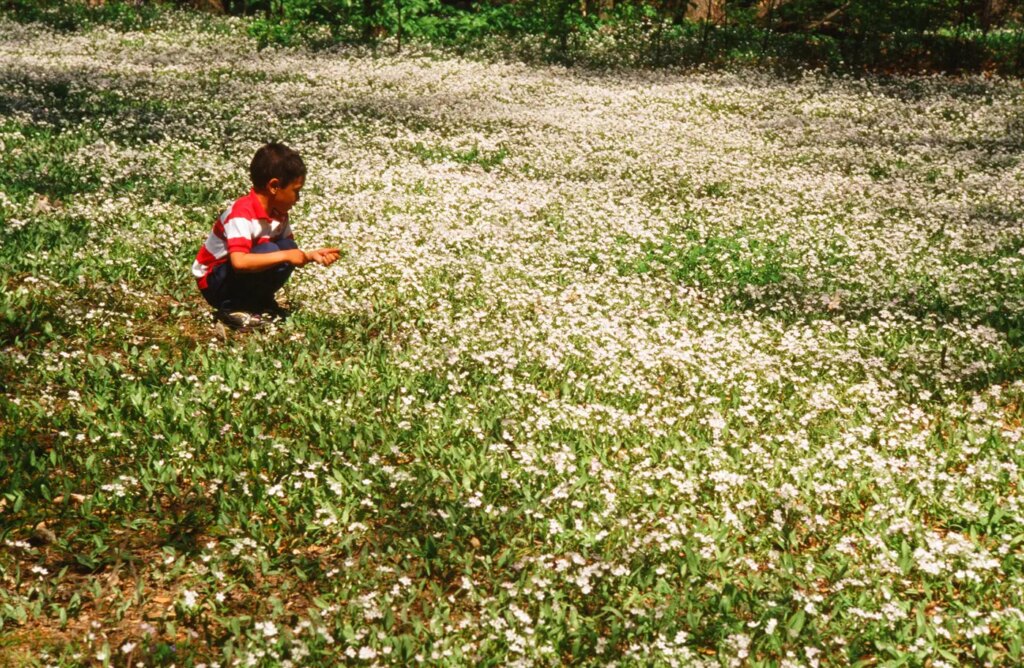
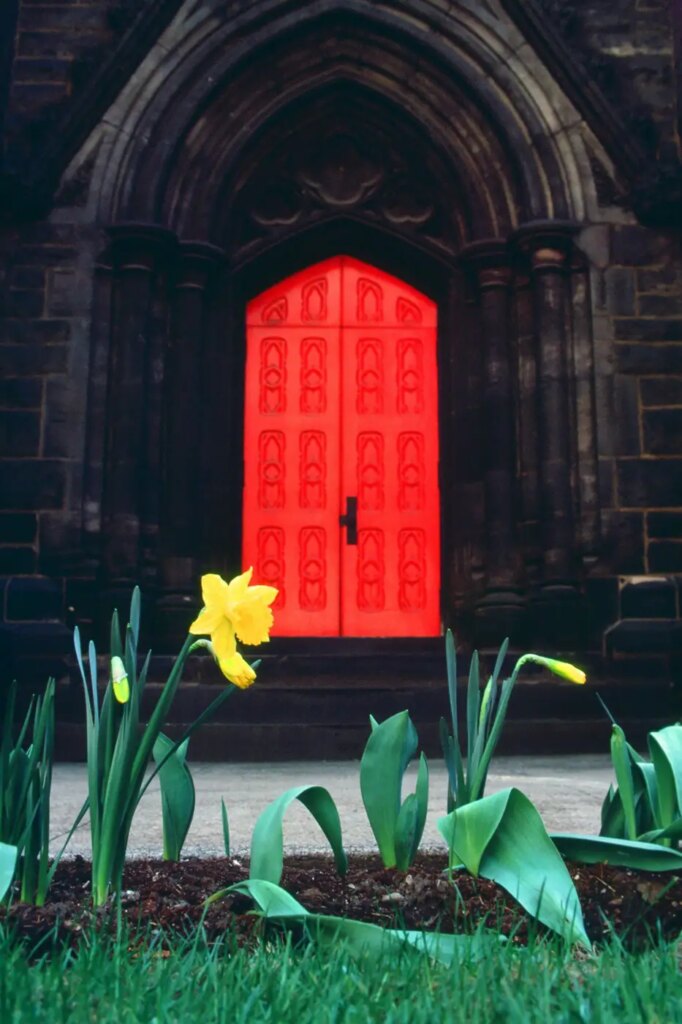
Both uncles had Nikons, but I had my eye on a Pentax K 1000. Went to what used to be the big camera store in town and I walked out with something different. A Ricoh KR30sp Program. I don’t quite remember the compelling reasons the sales person had given me, but the camera came with a F2.8 50mm lens and I also purchased a 14 – 105 macro zoom. In a year I had traded in the F2.8 50 and upgraded to a F1.7. I also added an autowinder. My first kit was complete.
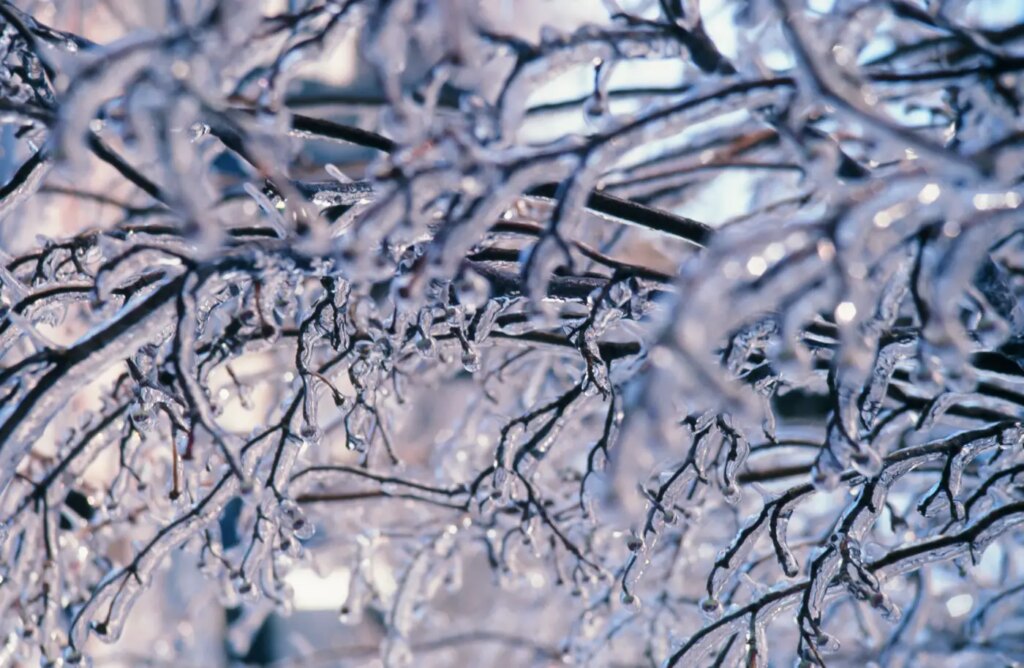
After 3 boring, deleted paragraphs explaining how I ended up there, I spent the next 10 years shooting color (negative and Kodachrome) with the Ricoh, B&W with the Petri. Overtime, as I married and moved, the darkroom was rarely set up anymore. I was tired of paying for color prints of every frame so I eventually found myself shooting Kodachrome on the Ricoh almost exclusively.
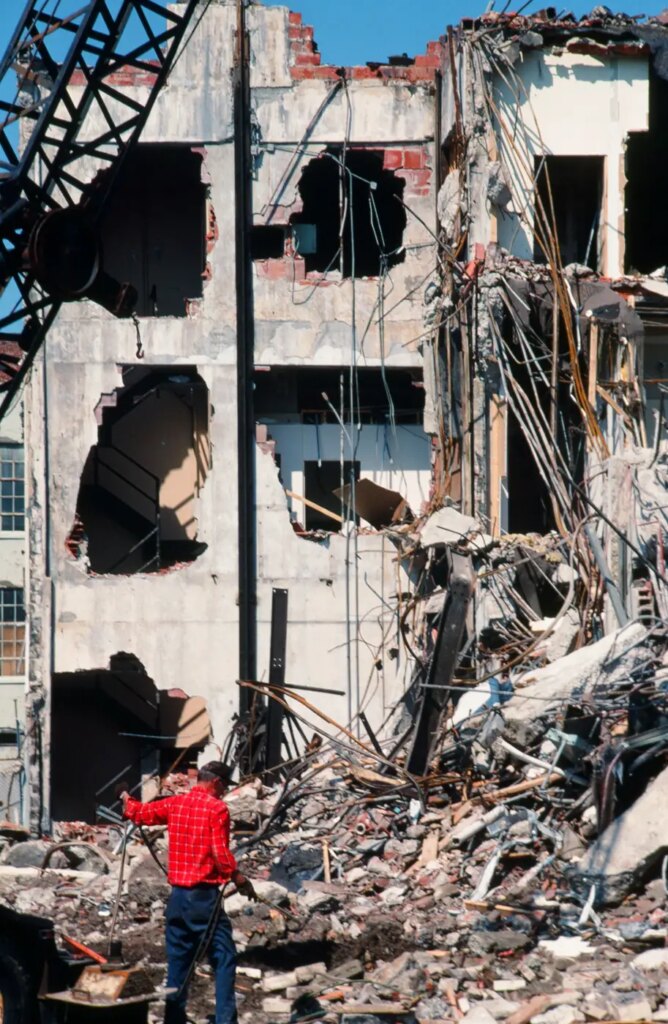
Over time, how and when I created images changed. Gone were the student days of sleeping through college classes, waking up to grab the camera to go find pictures, provided there was money for film of course.
Those days were replaced by jobs and responsibilities. With that came my first wife, frequently referred to as Angry Yellow Haired Woman. Shooting became infrequent. Film sat in bags where Cameras were collecting dust. She had little patience for my photographic wanderings and decided other hobbies were more appropriate. I became adept at making bookcases, side tables, night stands etc. When we moved to the middle of fucking nowhere, I became adept at growing pumpkins. (PS I’m still here, I can’t get out.)
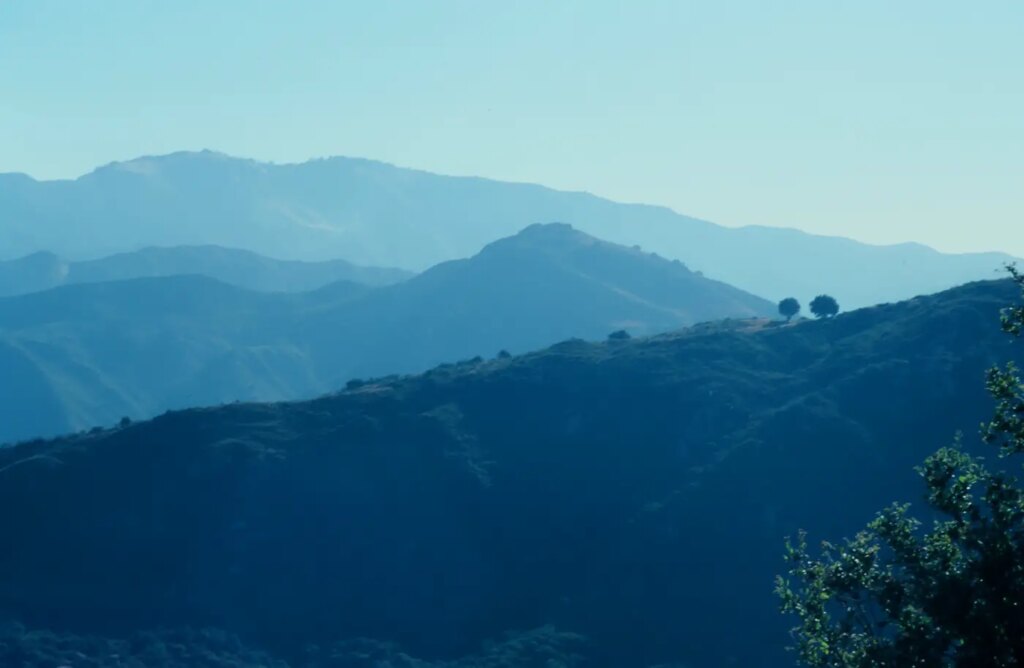
A lifeline came when I started to travel for business. I figured out I could stuff my camera inside my roller bag. I made space by limiting myself to the underwear and socks I was wearing. For those few trips where I expected to have some downtime, I could relive the days of youth and freedom.
Three key trips mark the end of my first life with creative analogue photography. They are spaced by time. A September, 2001 trip to Victoria, British Columbia. November, 2003 to Pottsdam, Germany and October 2009 to Palm Springs, California.
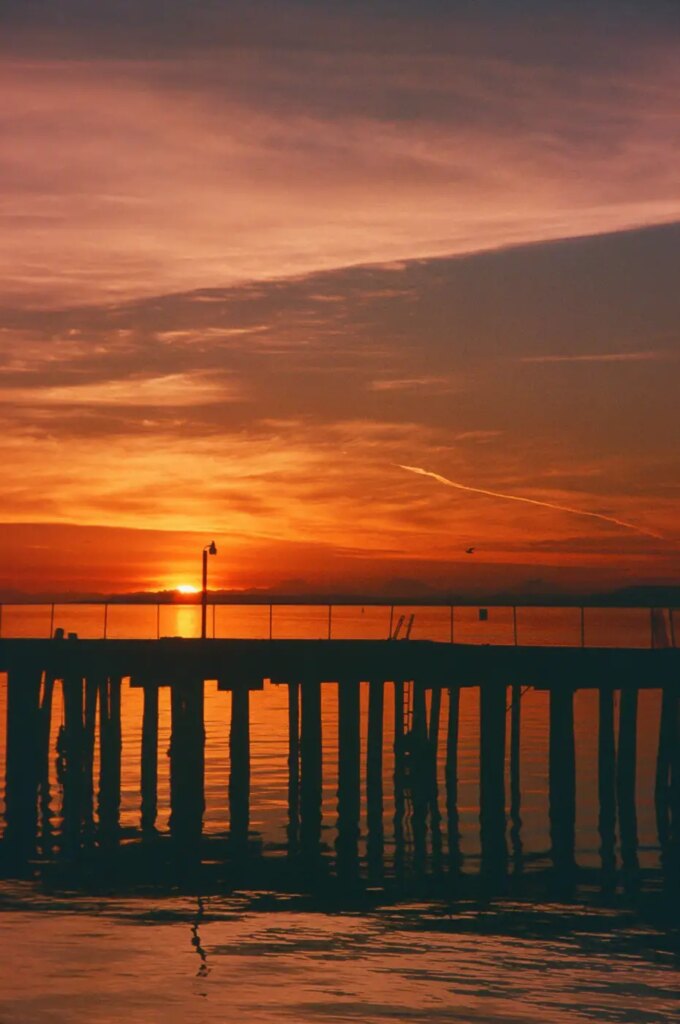
My travel to Victoria began on September 10, 2001 with a flight to Seattle. I rented a car and drove around Puget Sound to Port Angelis and would catch the ferry to Victoria the following morning. When morning came, the ferry ran, but 2000 miles away the world was changing forever. The conference limped on and finished, but the prospects of a return flight home dimmed. I had a couple rolls of Kodachrome with me. I bought three more. It helped me pass the time until I decided to start the 4-day drive home. On that drive, I fell in love with the American west. It has shaped dreams and aspirations ever since. That trip marked the last time I successfully used Kodachrome in the Ricoh.
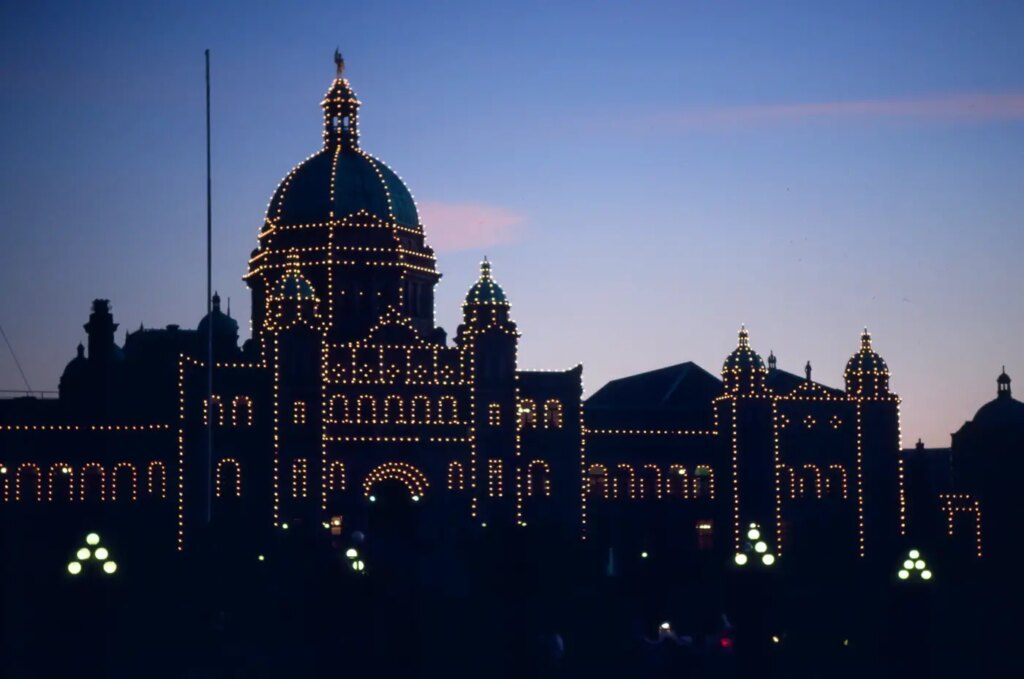
After this trip, the only evidence of photography relates to the 14 acres of my rural surrounds in the middle of fucking nowhere. (I’m still here, please send help!). I have rolls of color negatives documenting the acquisition of various ducks, geese and chickens, because well, Angry Yellow Haired Woman wanted them. As I shot these, I noticed something happening with the Ricoh. The shutter would snap, but the SLR mirror would get stuck and not drop back into place. Some apprehensive tinkering revealed that I could start to twist the lens like I was removing it and the mirror would drop back in place. A spring was beginning to lose its tension.
November 2003 found me in Pottsdam. The marketing research agency I worked for had acquired a European division and I was part of a team that coordinated analytic product offerings between continents. The European division held client conferences to share ideas. The conference began on Wednesday and ended Saturday morning. I stayed until Tuesday. The flights were cheaper and I took PTO on Monday.
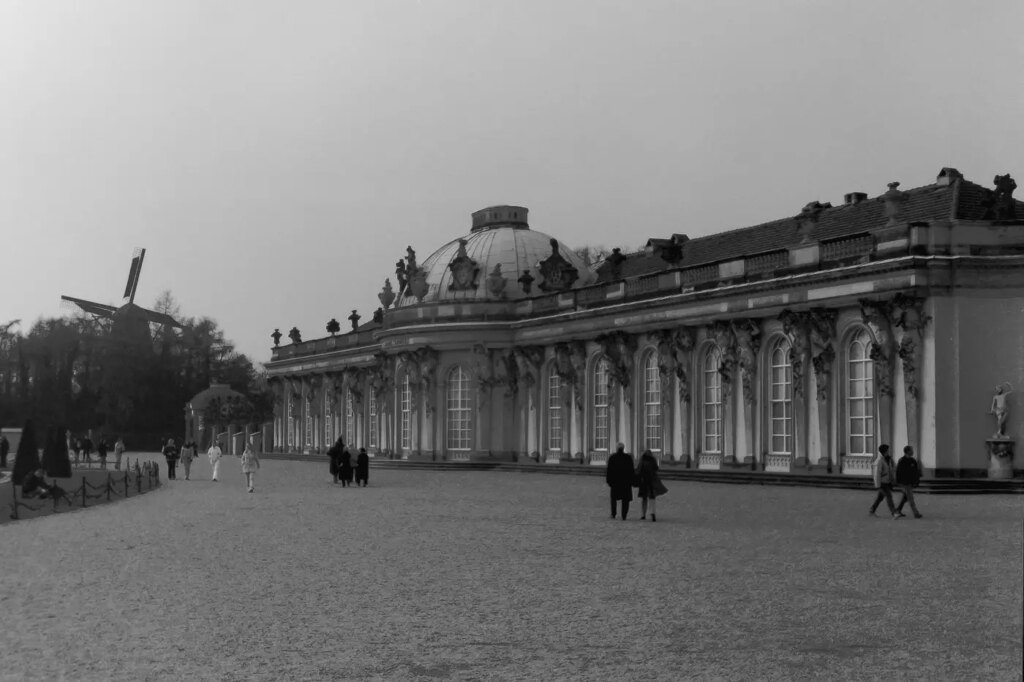
The conference was at a hotel right next door to Park San Souci. My first day to freely explore was Sunday. The weather featured a northern European combination of rain, snow and fog. There was no point in using the Kodachrome. I had a couple rolls of Kodak Tmax in the bag. One roll 125 and one 400, both had been there a while. I started with the 400.
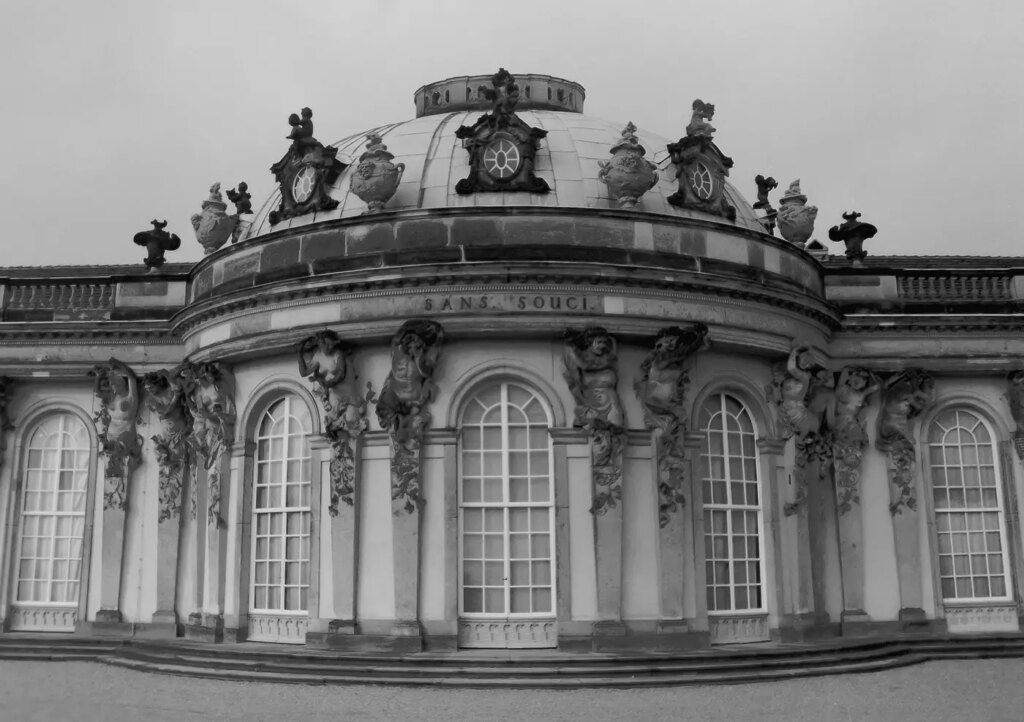
San Souci was Frederick the Great’s country palace built to resemble and perhaps someday rival Versailles. It had everything a vacationing Prussian Emperor needed to navigate the politics of larger European powers in the time of independent German states with negotiable loyalties. The park was in various states of repair and use. It had been 14 years since the fall of the Iron Curtain and reunification. Most of the grounds were park space. Buildings were either recently renovated, wrapped in scaffolding or mothballed and on a master schedule.
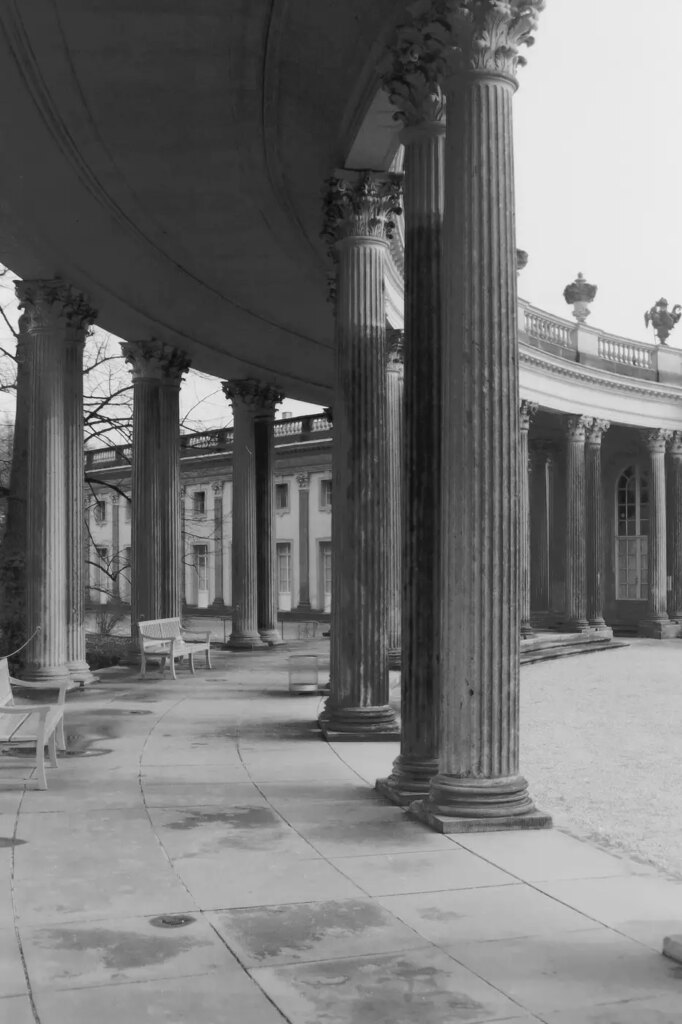
I navigated the grounds of Schloss San Souci, but being cheap, didn’t spring for the tour inside. From there I wandered past Frederick’s windmill where his grain was milled and onto the Orangerie, where fruits and vegetables were grown year-round. A mall lined with majestic trees led to the Belvedere; a left-hand ramble led to the Neue Palais.
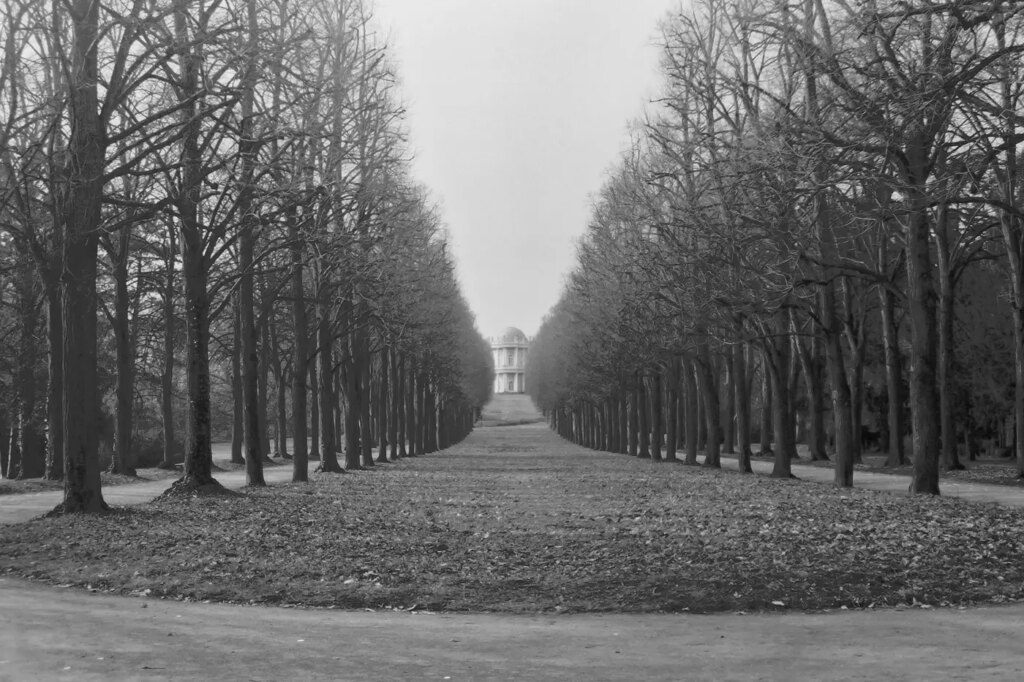
The first roll was full, time for the 125.
I finished my impressions of the Neue Palais and then took the path of lower elevation back past the steps leading to the Orangerie. I traversed the tiered gardens of San Souci and back to the hotel. Days were short, darkness was approaching.
Monday came and there was nowhere I needed to be. I had one problem. I was out of black and white film. I had several rolls of Kodachrome, but I had begun the exploration using B&W and that’s how I wanted to finish it. I wandered into town and began searching for a Photo shop. I found one and went inside. A kindly shop owner about my age attempted to help me. Her fluency in her second language, Russian, was no doubt far superior to my German which included useful phrases such as “Ich habe funf hunden”. Common ground was found around the phrase “schwartz und weiss”. I ended up with a couple rolls of Ilford FP4 Plus.
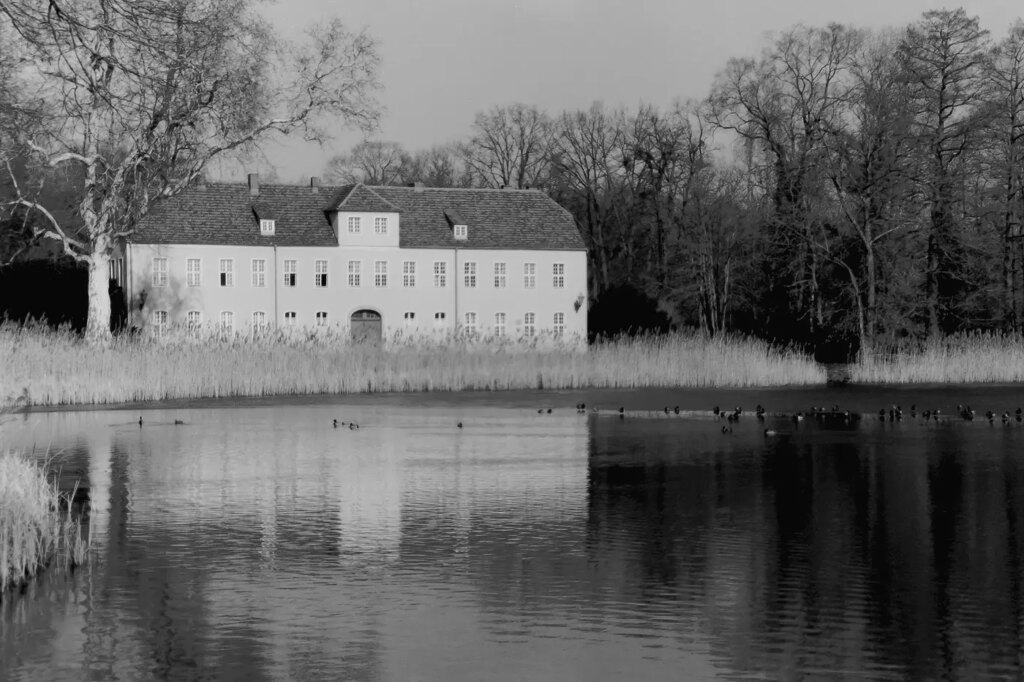
Now, the only Ilford anything I ever recall seeing in local stores back home was paper. If it was film, it was Kodak and then some other German and Japanese “Knock off” stuff, Agfa and Fuji. Please humor the preexisting cultural insensitivity, I was in the early phases of becoming a more sophisticated international traveler and on day 7 of the same socks. I had concerns, would this stuff even work? I figured out the ISO from perusing the box, fortunately it was in English (Yes – that was a joke). Loaded it up and away I went.
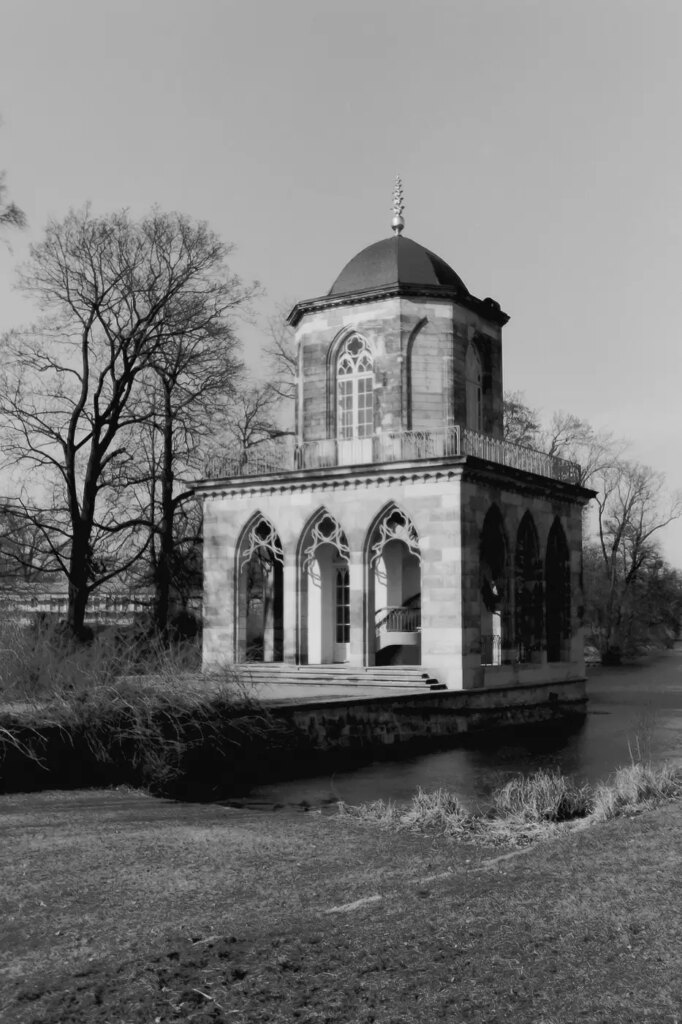
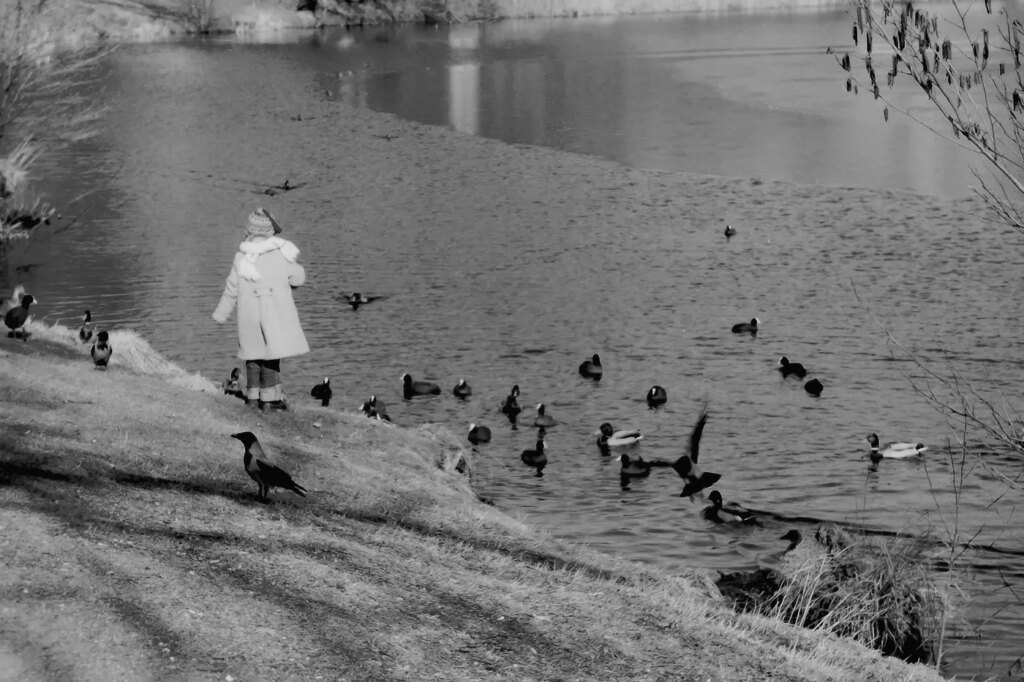
The day was markedly improved relative to the day before. The sun was out, it felt like October, not February. I wandered through town, started with the churches and headed north through the Neuen Garden around the Helliger See. Children were feeding ducks. The Marmorpalais was wrapped in plastic for our protection. The Schloss Cecilienhof was open for business. Though on this day nothing particularly important was going on inside. Back to town for some lunch and then past the Alexandowka Russian Colony and up the cemetery hill to Belvedere Spfingstberg. Then back to the hotel to pack for the flight home.
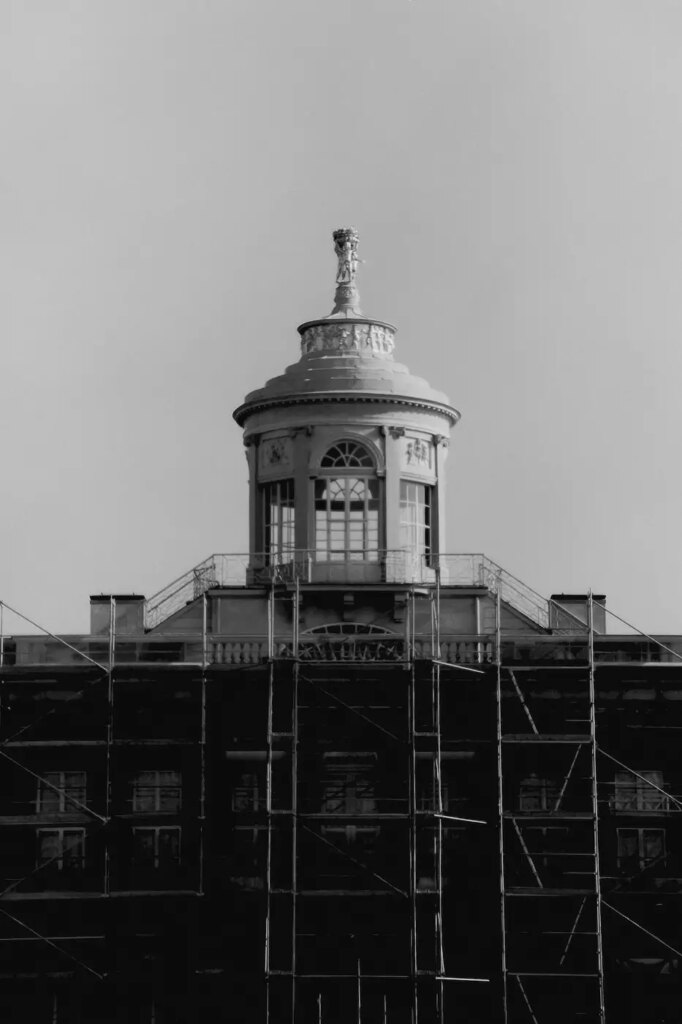
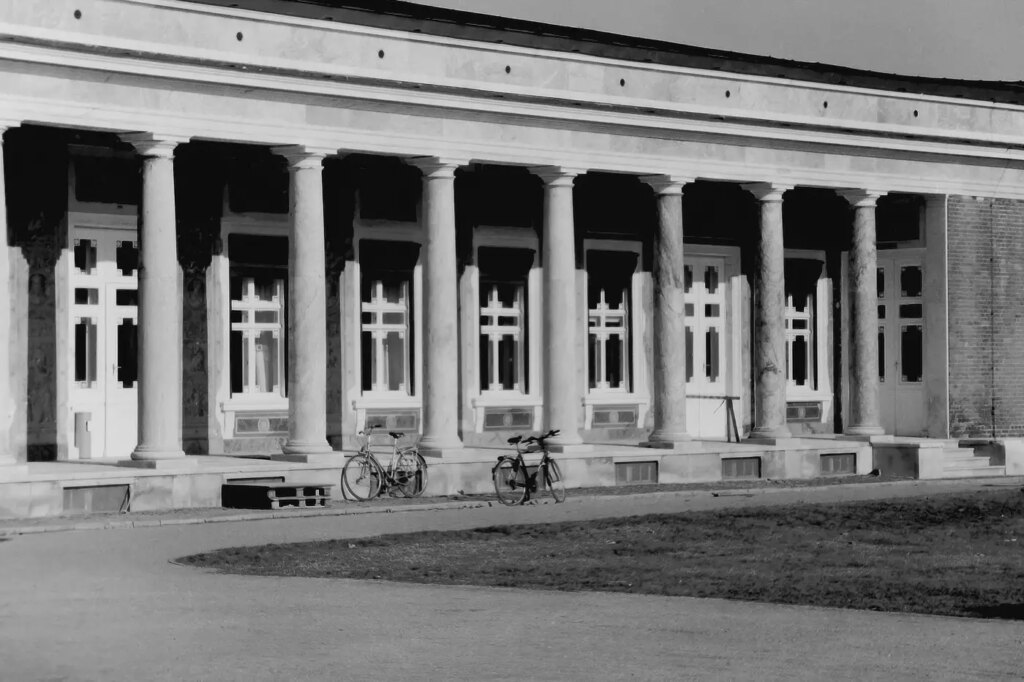
I should mention, this entire way, the camera was being cranky. Remember the spring losing its tension? ~150 shots, 150 lens twists to get the mirror to drop back into place.
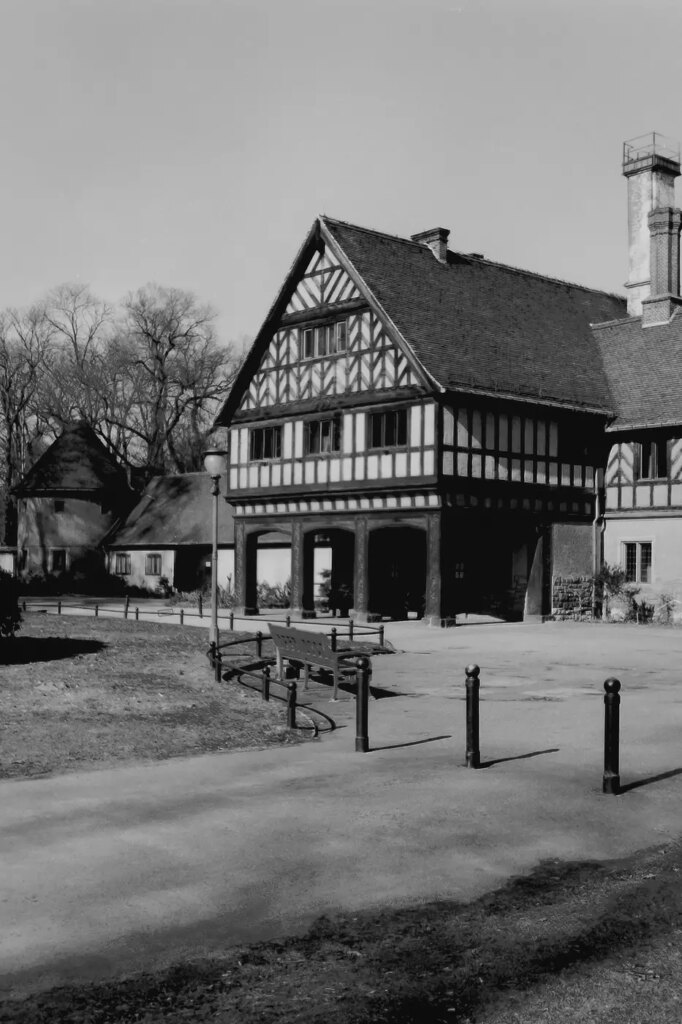
When I got home, I dropped film off at the lab. It was a new store, a new lab for me. The place I had bought the KR-30sp had now refocused their business on copier machines. I was asked if I wanted digital copies of the images. I said no. I was still a luddite regarding digital. I struck up a conversation with the desk person about the case of digital cameras to his right. “Which one was best?”.
He replied “None of them, they are all obsolete. New models are due in a month.” It brought back memories of the PC market when Intel 386 PC’s became “trash” the day the 486 chips came out, only to be replaced by the Pentium machines two years later. Digital photography sounded like a scary place.
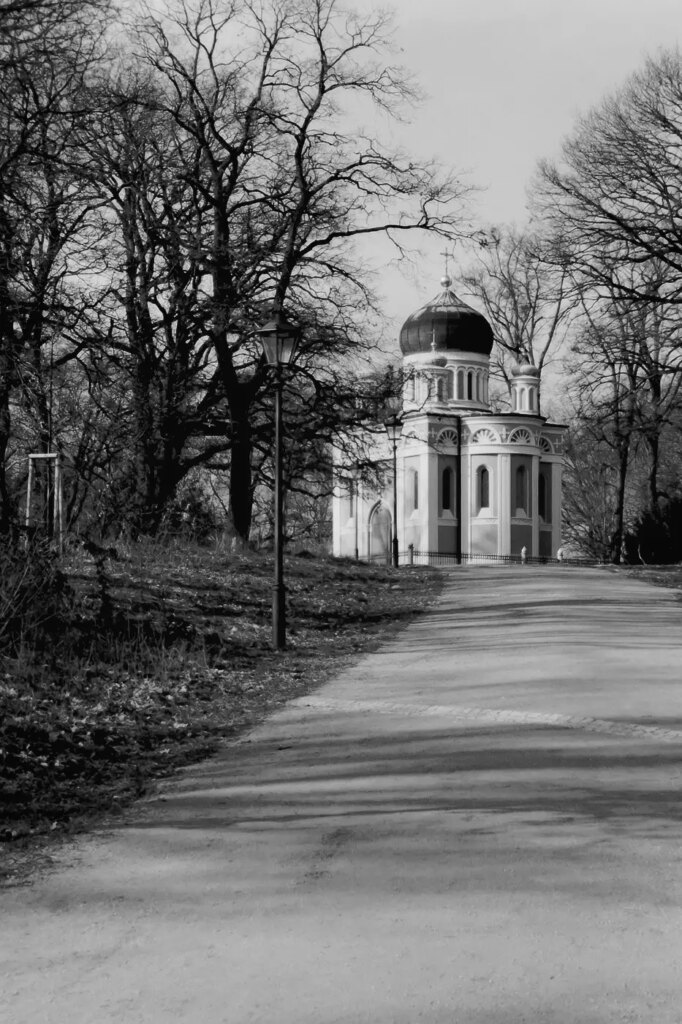
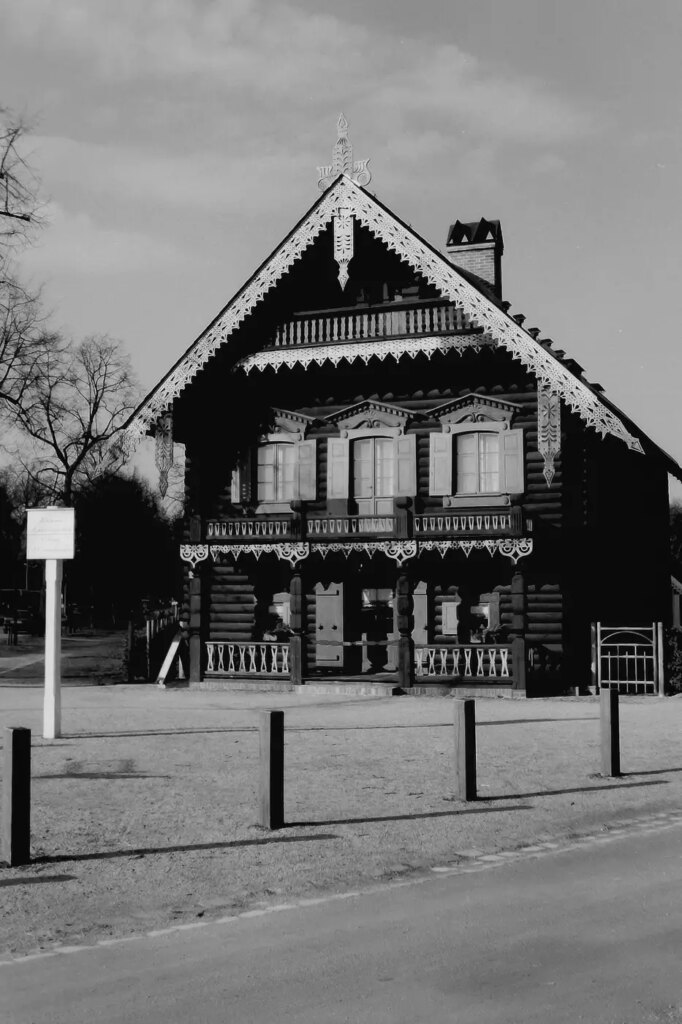
Fortunately, the images developed. When I picked them up, I asked the shop keeper if they repaired cameras. Nope, only sold and printed. He suggested a different store.
I went to the other store with the Ricoh and inquired about a repair. The counter person looked at the camera played with the lens to get the mirror to drop back in place and said “I doubt we can get parts. Have you considered switching to digital?” He pointed to a display of the same cameras the previous shop keeper had told me were already obsolete. Digital was a scary and expensive place. I was married to film.
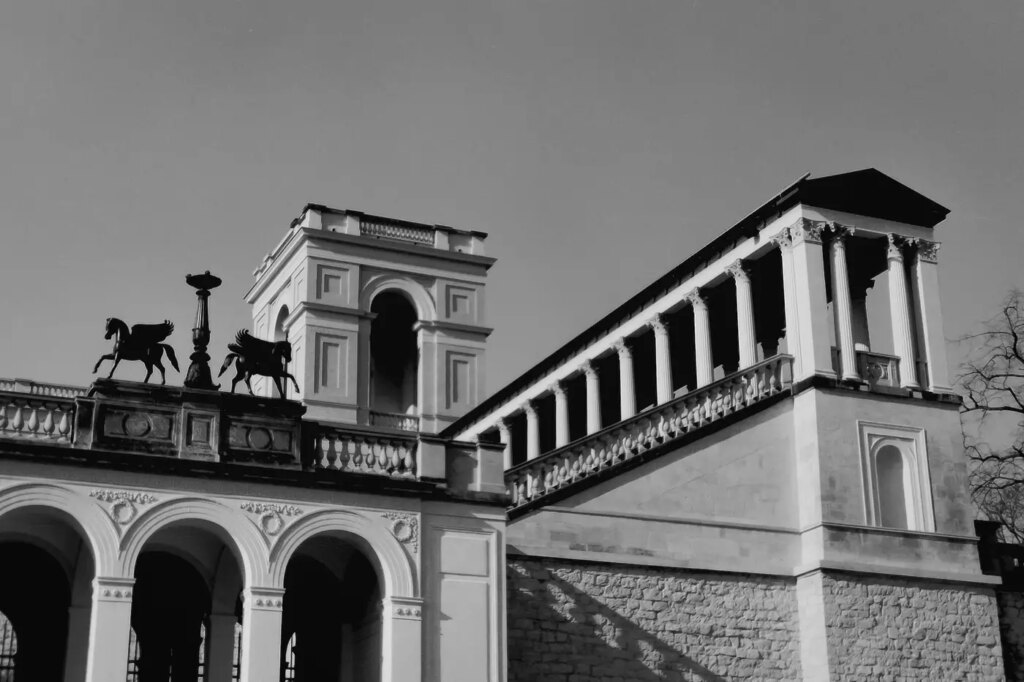
Time moved on and so did Angry Yellow Haired woman. Jenny entered into my life but the camera stayed in the bag. I had moved onto the executive team at work, my responsibilities multiplied. The financial crisis of 2008 sapped any hope we had in selling the place out in the middle of fucking nowhere. We chose to remodel so that it was ours, but again this took a lot of time.
We started to travel. I realized the film stocks I knew were becoming harder to find. Processing even more difficult. I bought a little red Nikon digital point and shoot for a non-business trip to Europe followed a few months later by a voyage to Yellowstone. Perhaps the most disappointed I have ever been in a camera. It must have been obsolete.
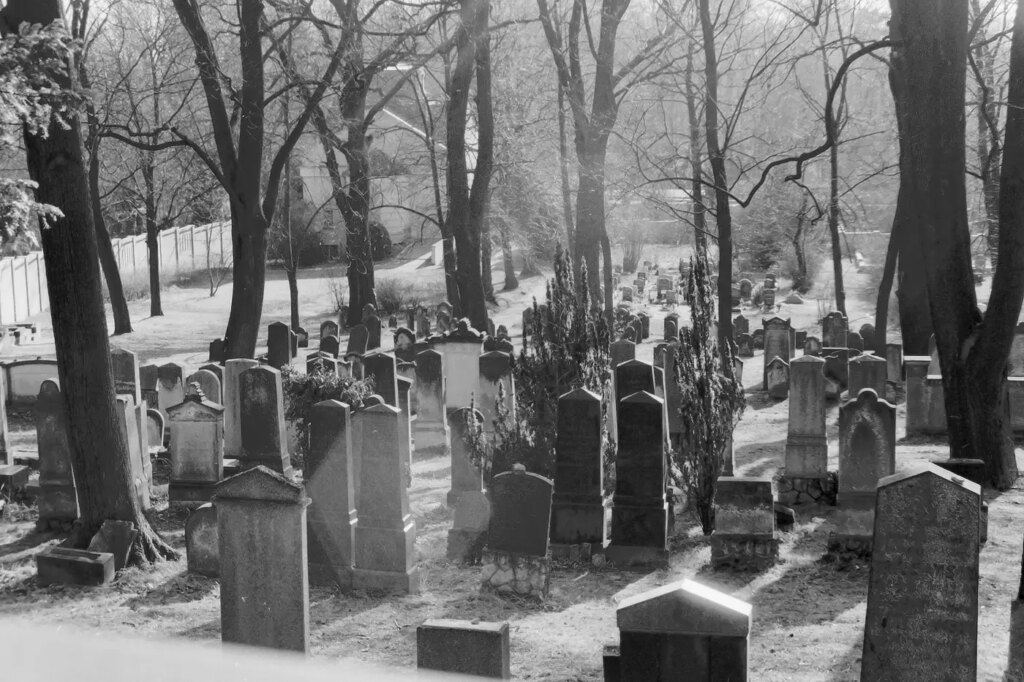
In 2009, news came that Kodachrome was going away. Sales had effectively stopped from lack of stock and a date was set for the last processing runs. I knew there were 5 rolls still in the bag with the Ricoh. I had to do something special with them.
It was October, I had an upcoming conference in Palm Springs, California – right next to Joshua Tree National Park. Being a U2 fan from the mid 80’s … you’d understand the allure. When the conference was over, of course I took extra days of PTO. By now I had a larger roller bag. I could pack both the Ricoh and fresh socks and underwear.
Three different days of hiking, 5 rolls of Kodachrome and a loose roll of Ektachrome were exposed along the way. Pardon me for the fish that got away story, but it was the best shoot ever. Glorious. I was seeing like I had never seen images before. The light was magic, my skills sublime.
In early December, off to Kansas the film went. I was beating the deadline by month. I waited with keen anticipation. Two weeks later there was a package in the mail. Like a 5-year-old on Christmas day I opened the package. Roll after roll of completely blown out film. Not even mounted in slide frames. Except one lone solitary image half blown out, half properly exposed. The image was of a concrete parking lot, the toe of my shoe just crept into the corner of the shot. Crestfallen doesn’t begin to describe the feeling.
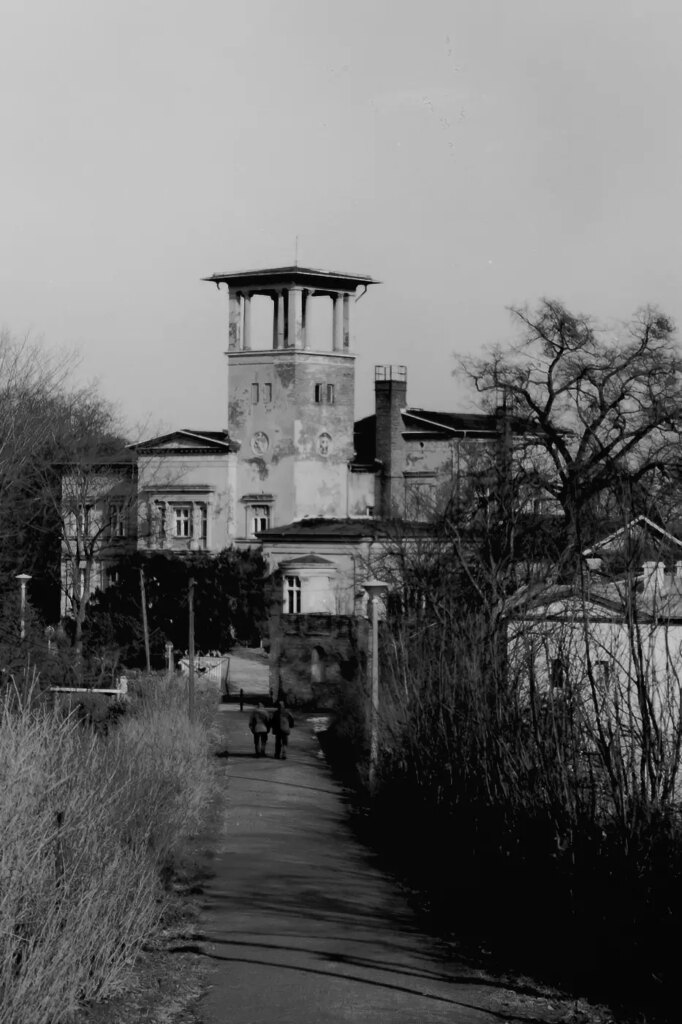
I had loaded the film, advancing past the leader when the shutter malfunctioned. Like in Pottsdam, I continued to do the lens twist so the mirror would drop back into place. This time another spring had failed. I was unaware of the second malfunction.
The end of my first life with film was over. Two years later I bought the Olympus EP-L1 that marked my transition to digital. At home in a different bag was the Petri 2.8. It needed some love, but 8 years later, I would use it to begin my second life with film.
You can find me on my Site, Twitter and 500px
Share this post:
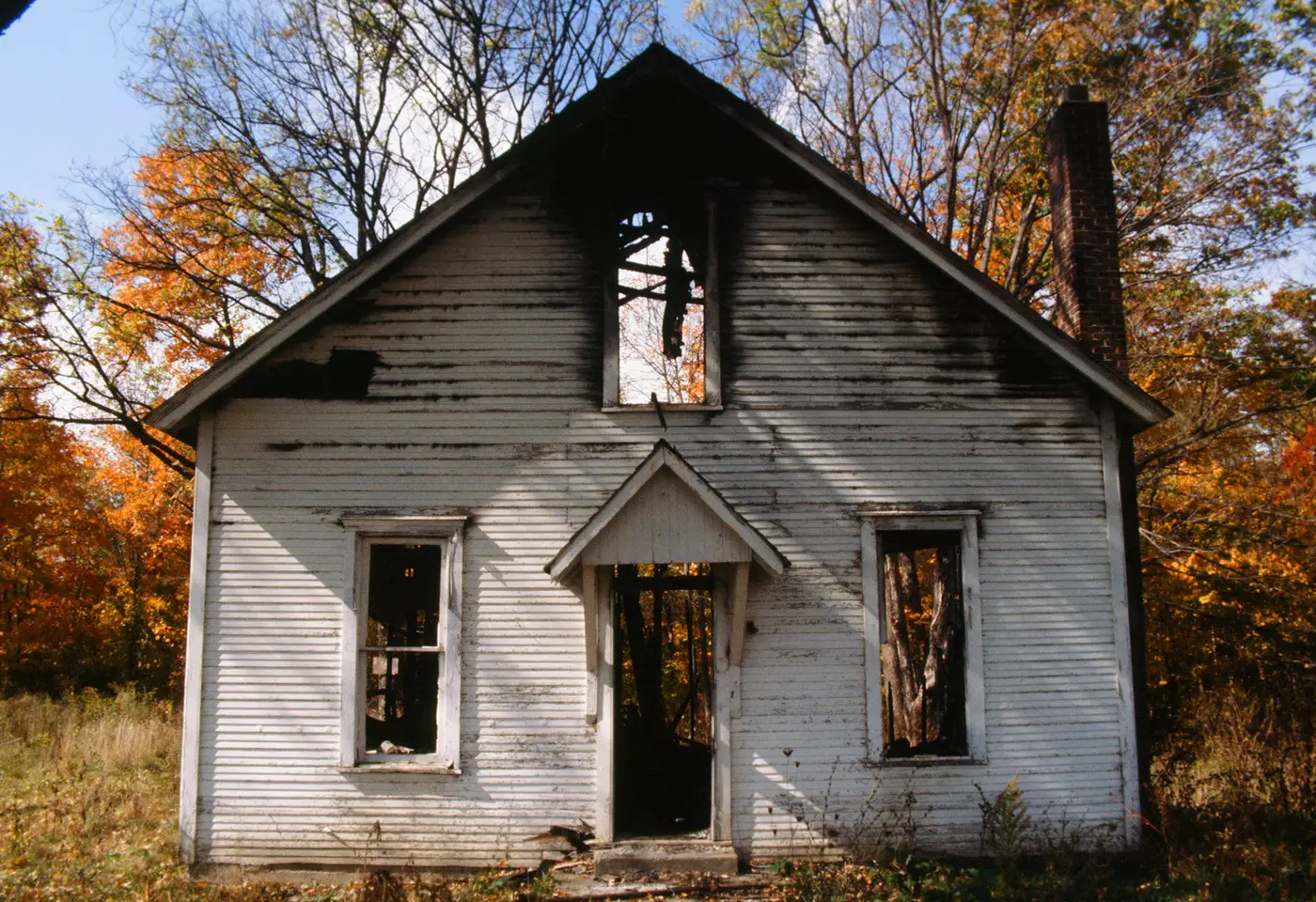








Comments
Conor O'Brien on The Life and Death of a Ricoh KR-30sp Program – By John Pemberton
Comment posted: 12/06/2022
Comment posted: 12/06/2022
Tim Bradshaw on The Life and Death of a Ricoh KR-30sp Program – By John Pemberton
Comment posted: 12/06/2022
Comment posted: 12/06/2022
Juna on The Life and Death of a Ricoh KR-30sp Program – By John Pemberton
Comment posted: 12/06/2022
Comment posted: 12/06/2022
Kenyausaman on The Life and Death of a Ricoh KR-30sp Program – By John Pemberton
Comment posted: 12/06/2022
Comment posted: 12/06/2022
Jalan on The Life and Death of a Ricoh KR-30sp Program – By John Pemberton
Comment posted: 13/06/2022
Comment posted: 13/06/2022
Felix Troiszéro on The Life and Death of a Ricoh KR-30sp Program – By John Pemberton
Comment posted: 14/06/2022
Comment posted: 14/06/2022
Comment posted: 14/06/2022
Comment posted: 14/06/2022
Wes Hall on The Life and Death of a Ricoh KR-30sp Program – By John Pemberton
Comment posted: 15/06/2022
No dear readers, what we've all just read is the last cries for help of a caged and beaten artist, used for the last several decades to create these lovely Kodachrome vivid shots.
Poor soul in the middle of fucking nowhere...
Great article, made me chuckle.
Comment posted: 15/06/2022
Comment posted: 15/06/2022
JAy Dann Walker in Melbourne on The Life and Death of a Ricoh KR-30sp Program – By John Pemberton
Comment posted: 15/06/2022
My past life was very similar to yours. At age over 70, I've now freed myself from almost everything painful in my earlier years, and I now live more freely, with a SO who understands me and allows me the leeway to express my true self (in non-destructive ways) and live the experiences I enjoy most in my so-called Old Age. The term is nonsense, of course. The only thing to be remembered about being almost 75, has to be you have to seriously consider giving up most things you enjoy before they give you up. As for the rest, charge on!!
What has kept me sane in this mad digi-everything age, is returning to black-and-white photography - with my Nikon D800 and Fujifilm XT2. Usually the latter, as it lets me select more film options, 'tho the Nikon is of course full frame and the Fuji half frame, or close to, or some such thing. Precise definitions fail me just now. Let's just say, FX as against DX. But when I look at the results, those from the latter seem to me to be just as good as those from the former. Maybe best not to go there, huh??
B&W photography with my digital gear and one lens (usually a 28 or 35 equivalent which are how I see the world around me) take me back to an earlier time when I was more important than the gear I carried with me. I went to Bali in 1970, 1972 and 1974 with a Rolleifle, shot heaps, and sold almost all of it. Ditto two trips across North America, 1979 and 1982, again with the Rollei. Film was so cheap then. Also processing. Kodachrome without the processing cost US$3.80. Film was everywhere. I bought K-Mart 35mm color negative film (okay, so I've lied a little here, or rather left out a few things, I did take a Nikkormat with me on the across-the-USA journeys I made in a 1970 Maverick with so little money, there were times when I had to scrape together all my small change to put enough gas in the tank of that Ford to get me through the week in the back blocks of the US Southwest and Midwest where I was hanging out. But I did it, and do you know what?? Those K-Mart negs are as good as any other films I shot with any of my cameras. Color negatives convert to beaut B&W images. As I'm now finding out with my scanning. All the memories...
Anyway, my intent here isn't to hijack your most excellent article, but to just say I enjoyed it immensely and it brought back so many good memories from my own days, way back then.
Otherwise let me say only this. As for Potsdam and Frederick's multi-room pile of bricks, I've been there. Take it from me, all you missed by not going inside, is too many interiors painted in lurid gold with some Gawd-awful furniture. He may have been a great king but his interior designer has a lot to answer for. The gardens and the buildings were memorable. You did well.
You tugged a few chords in my heart-strings and I will be looking to read more of your writing. No, this isn't a romance proposal. Just a heart-felt appreciation of your fine style in putting together the words, oh, and your images too. More kudos to both.
From Dann in Melbourne, Australia.
Comment posted: 15/06/2022
Jay Dann Walker in Melbourne on The Life and Death of a Ricoh KR-30sp Program – By John Pemberton
Comment posted: 15/06/2022
From Dann in Melbourne, Australia
Zachrandir on The Life and Death of a Ricoh KR-30sp Program – By John Pemberton
Comment posted: 09/11/2023